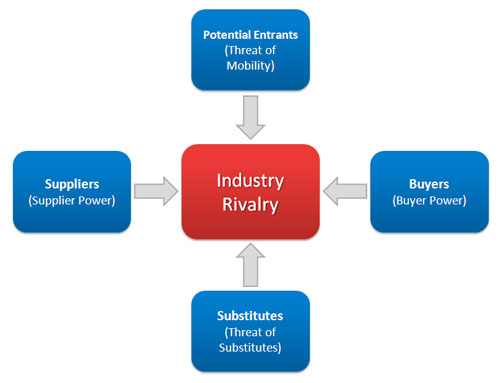Porter's Five Forces Model can be used to analyze the article "UPS vs. USPS". This article mainly focuses on the United States Postal Service's initiative to cut $3 billion in costs but also discusses the rivalry within the mail delivery industry.
Using Porter's Five Forces, the mail delivery industry is a decently attractive industry. The threat of new entrants is low, as is supplier power low. On the other hand, industry rivalry and buyer power is very high. Consumers who need to mail a package do not differentiate between UPS, USPS, FedEx, DHL other than on price. There are not many differentiating services or products that make one company more attractive than the other. For this reason, buyer power is high and makes the mail delivery industry less attractive. Finally, there are some substitutes for mail delivery. With email, the Internet, and cell phones so prevalent in today's society, mailing a "snail mail" letter is less attractive. When I was younger, I remember receiving letters regularly. Birthday invitations, greetings cards, and bills all depended on the mail delivery industry. Now, I rarely receive any of those in the mail. More often than not I receive e-cards, e-invitations, or online billing statements. With all of these substitutes for physical mail delivery, it is no wonder the USPS has mail volumes down 50%.

If the United States Postal Service doesn't act quickly, they will go out of business and become defunct in today's technological society. Fortunately for them, they are revising their strategy and aiming to cut costs. Cutting costs comes at the trade-off of decreasing delivery time and customer convenience. USPS stores will be farther away from people's homes and mail will average 2-3 day delivery instead of 1-2 day.
Also within the industry, UPS is changing it's strategy and looking for other profit pools within the industry. They are branching out to include additional services. For customers who are willing to pay a monthly fee of $40, UPS will guarantee delivery within a 2 hour time frame to any location specified as opposed to a 4 hour standard delivery time frame.
